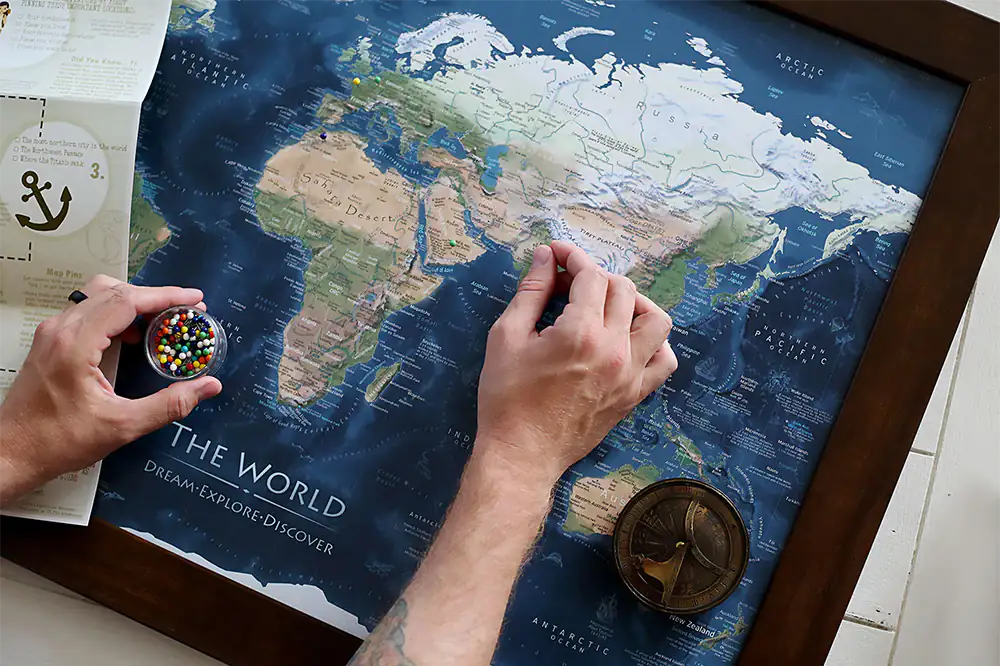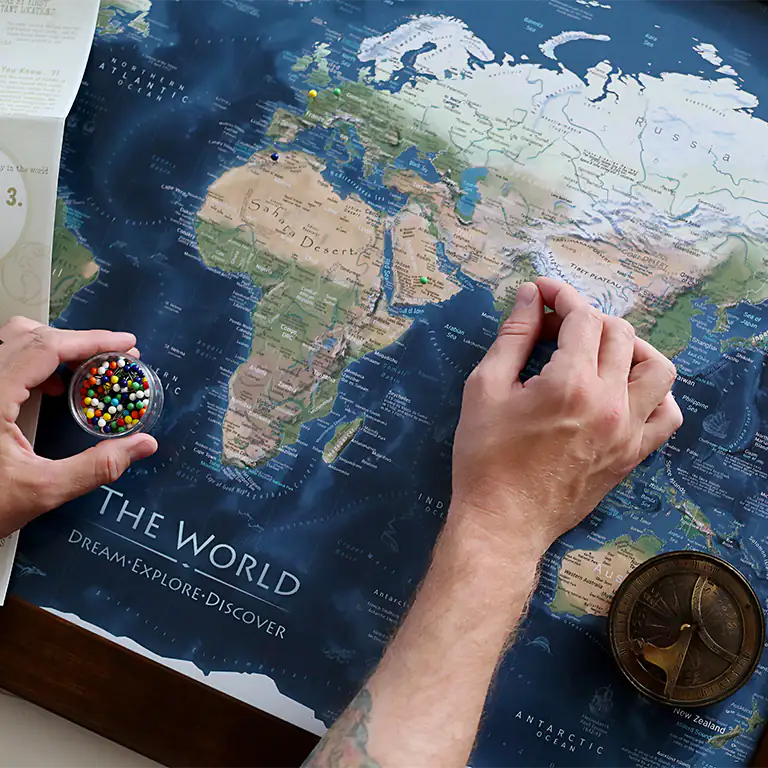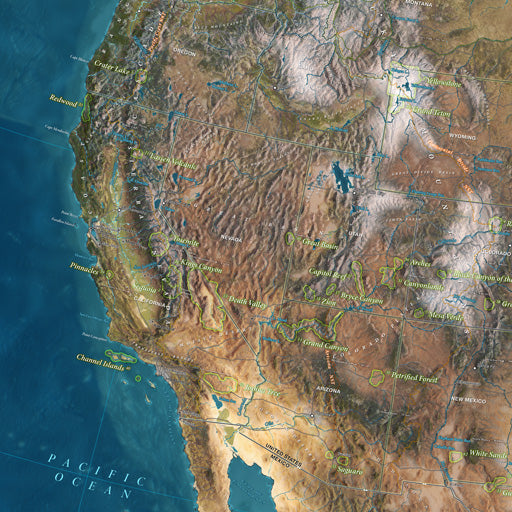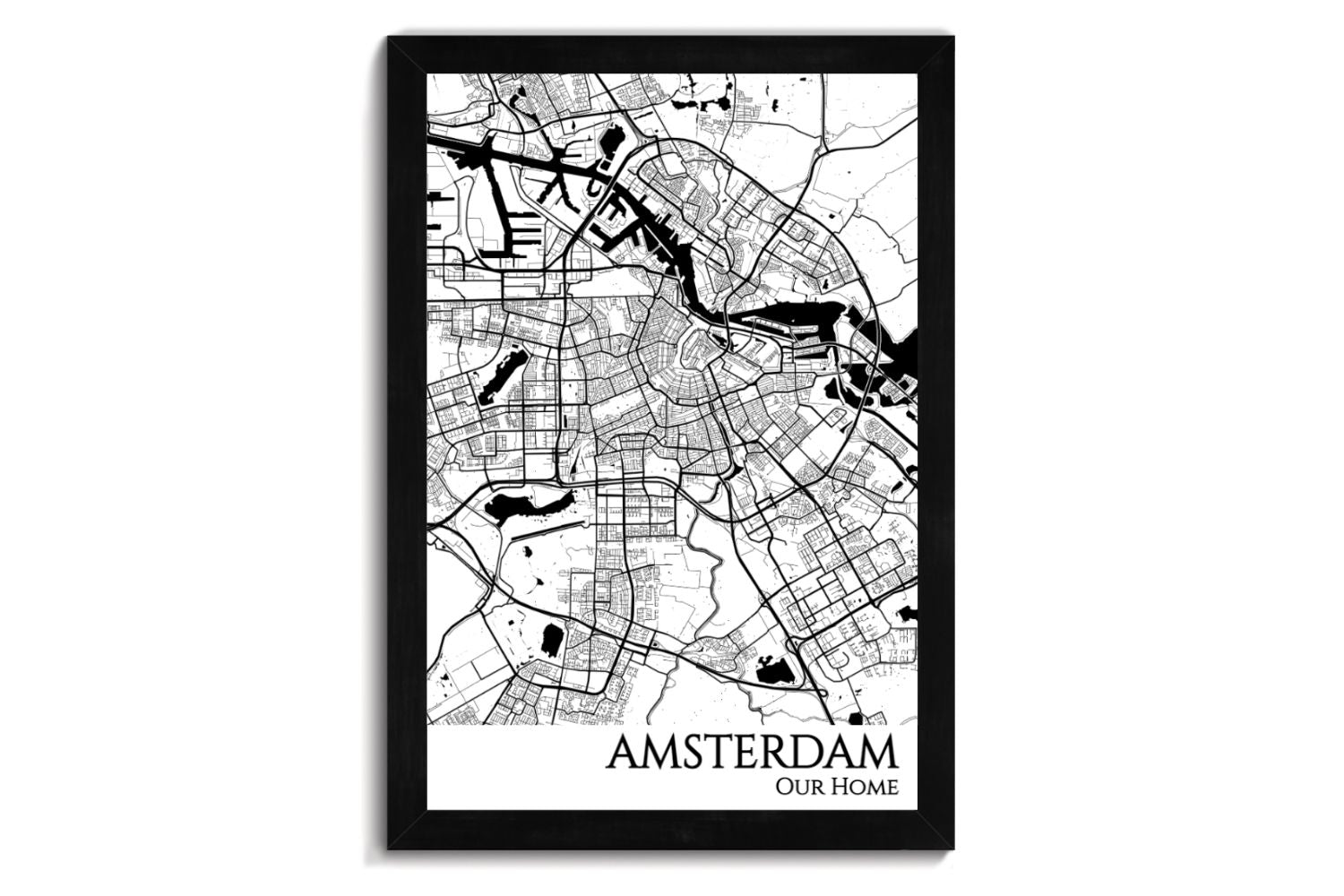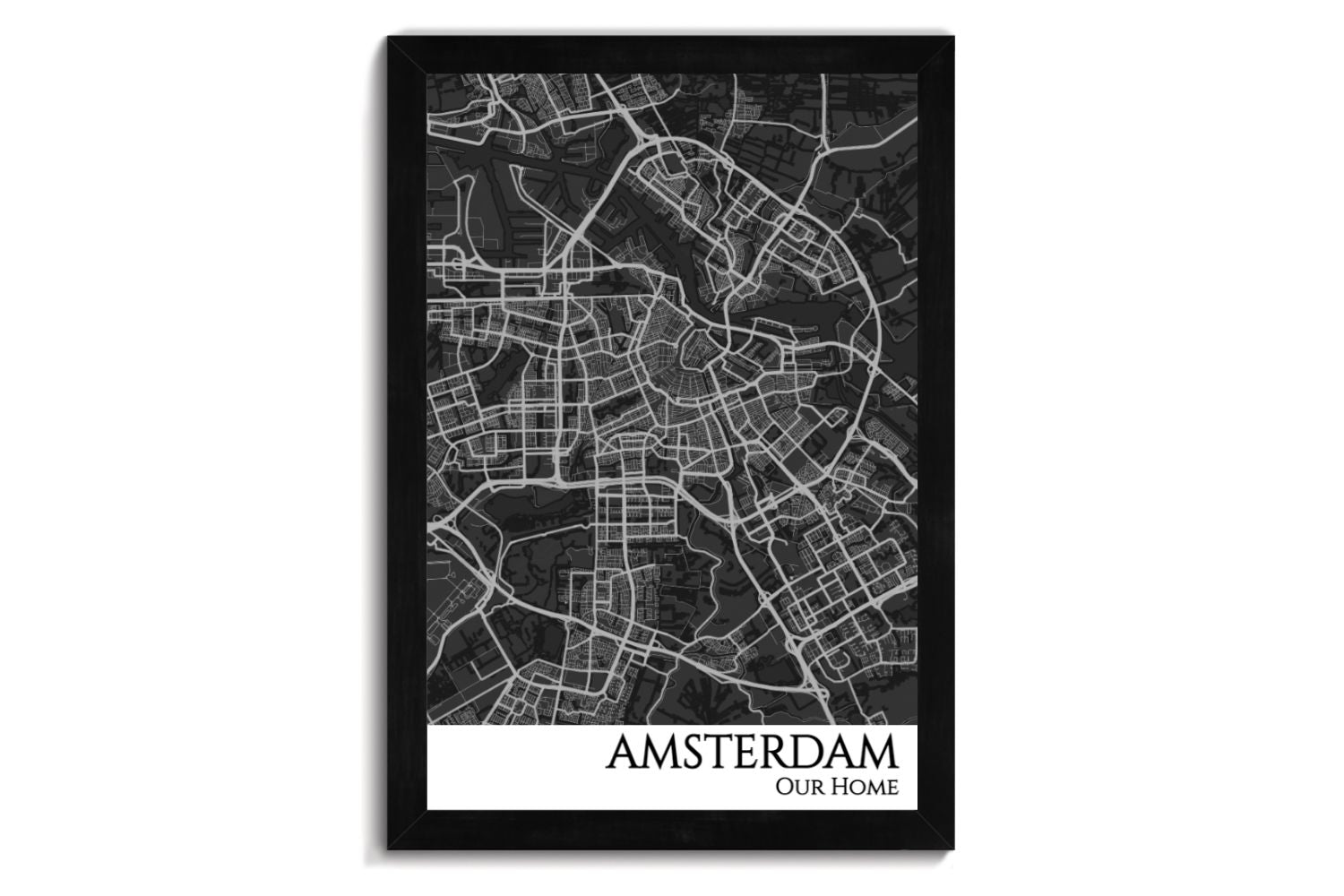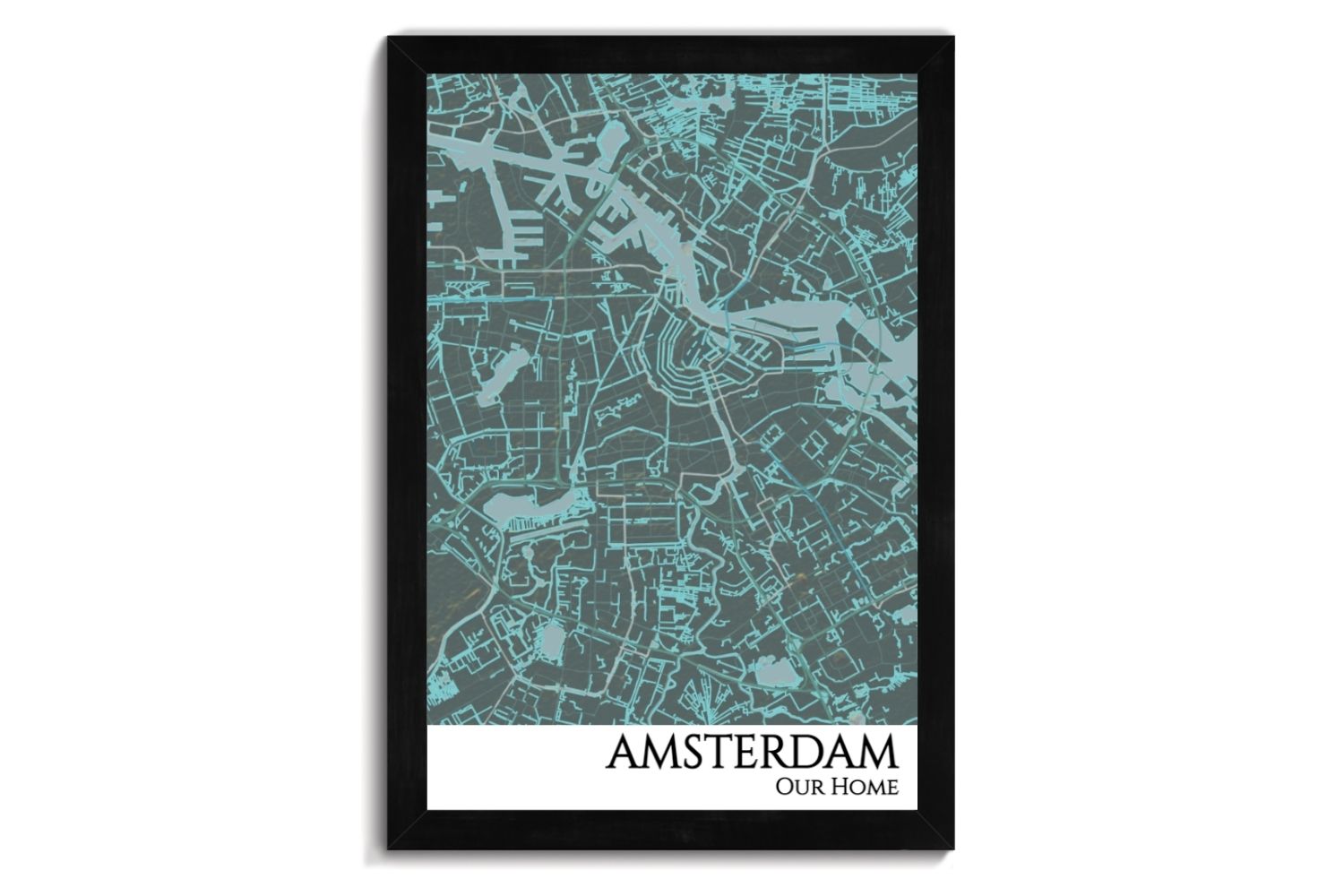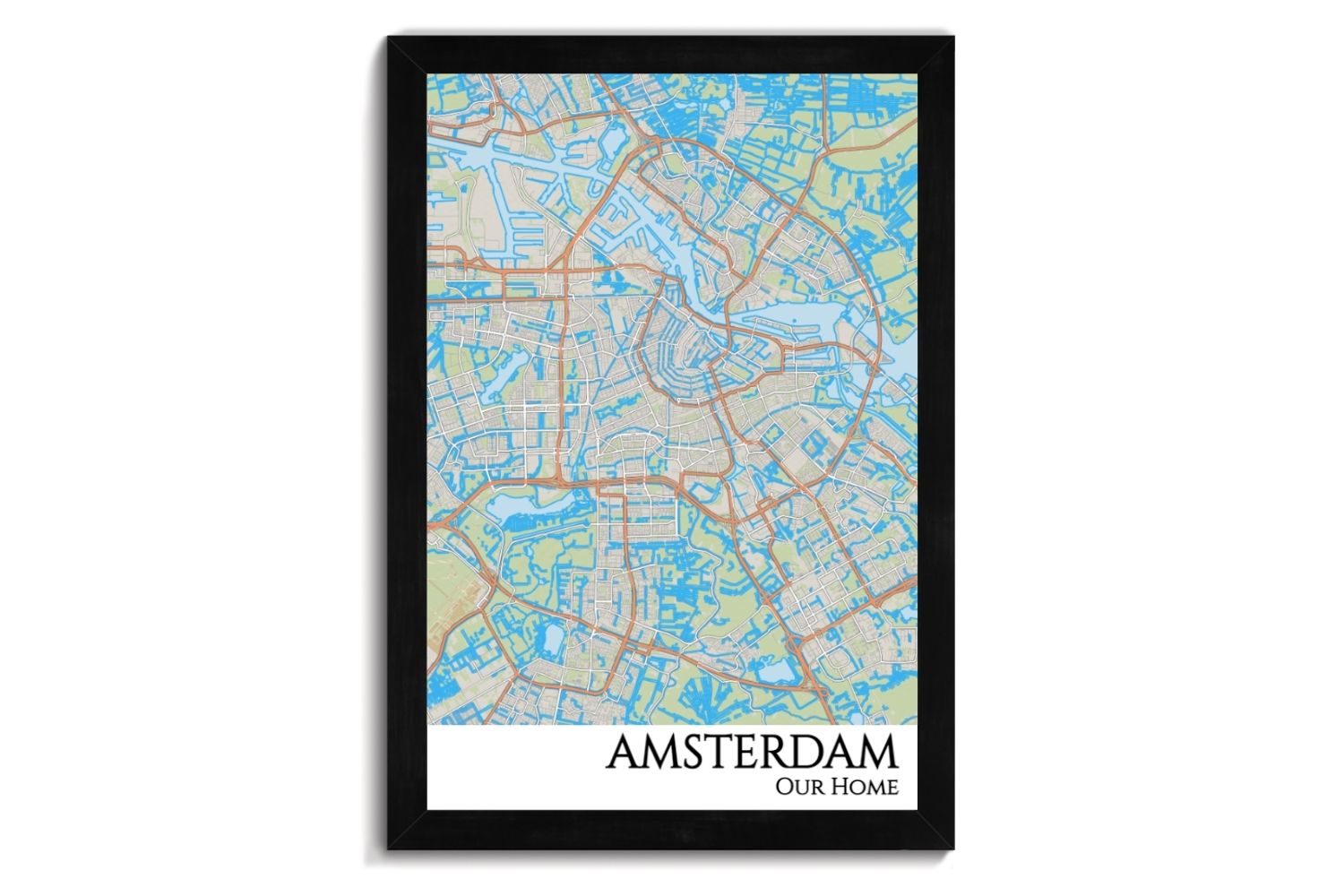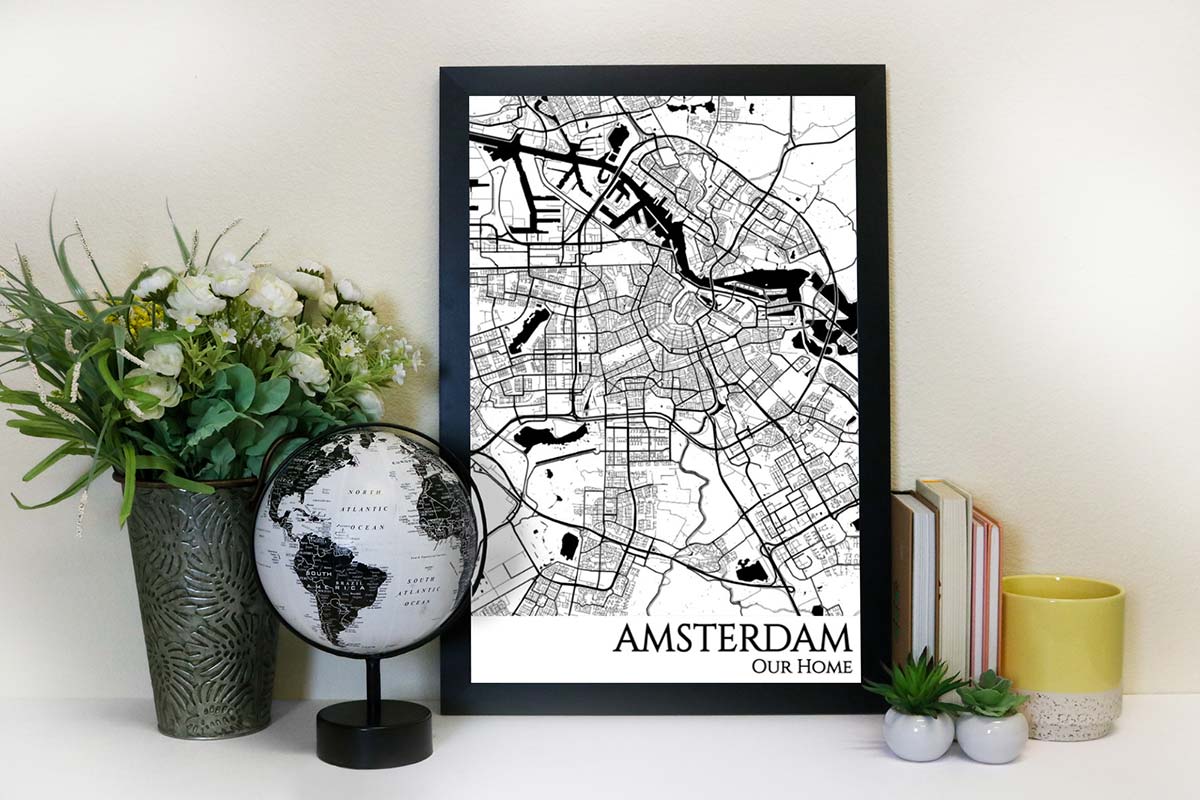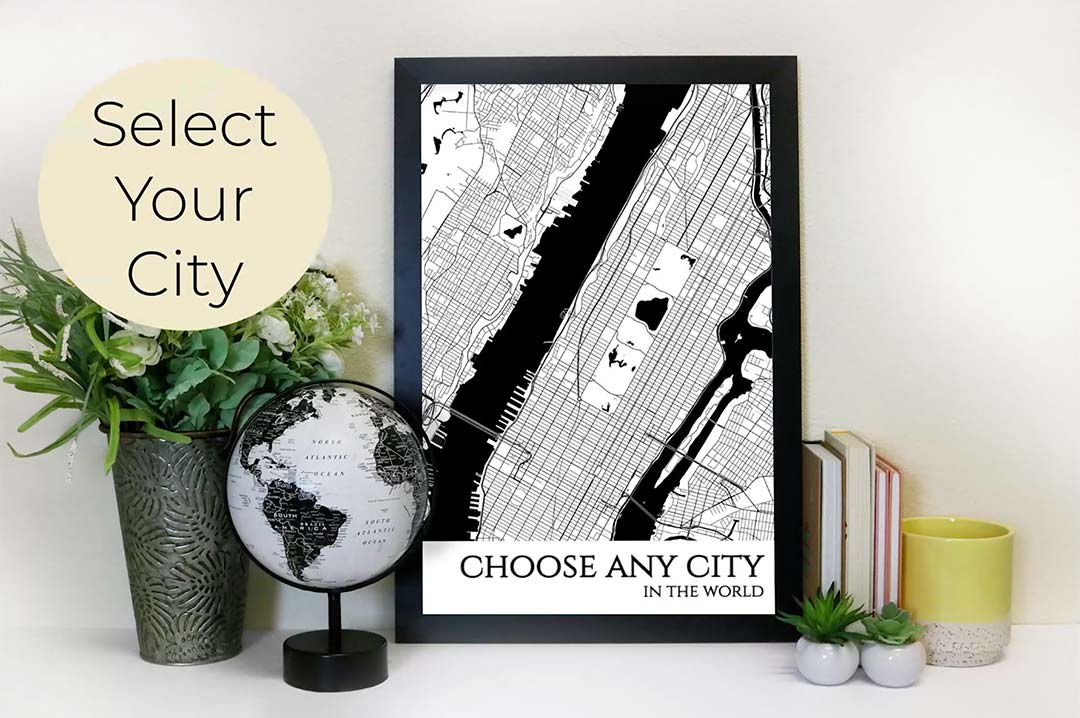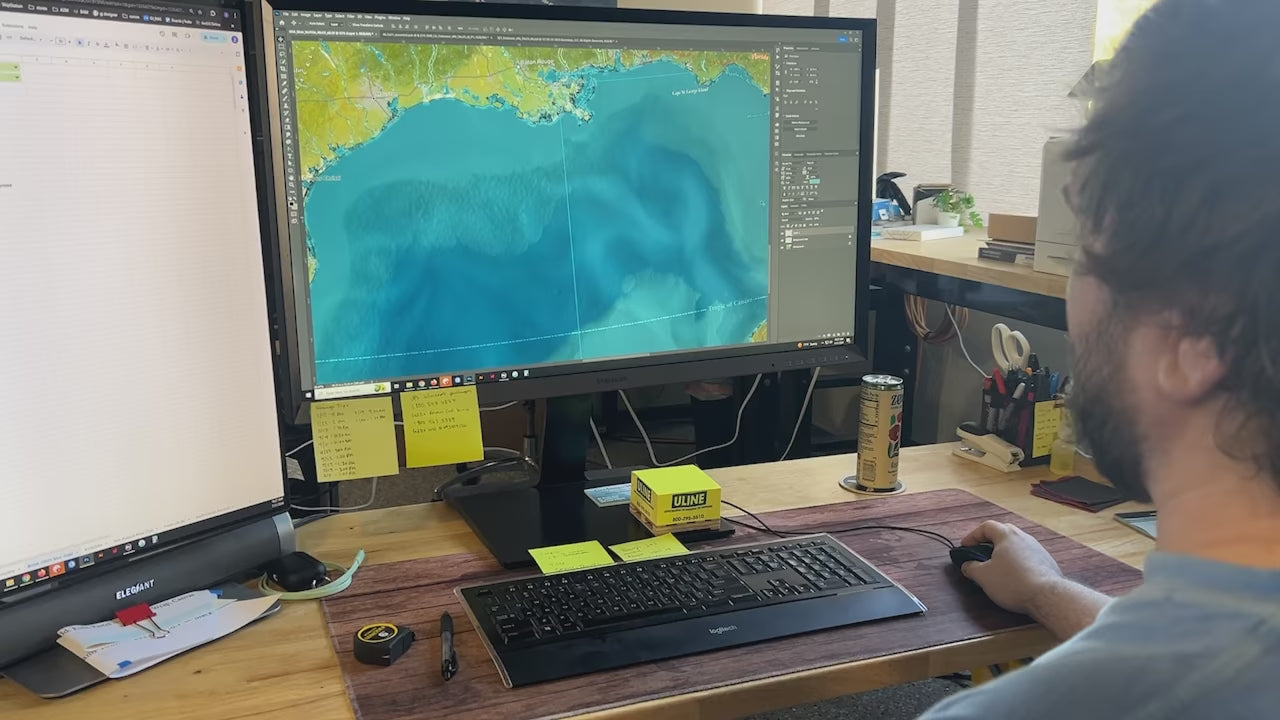Beautiful framed push pin map displays the unique network of city streets, canals, landscape, and water features of Amsterdam. This impressive map has an abstract quality and reveals the patterns in the layout of the city. The fun artwork is a delight to explore! Buy any 2 Push Pin City Maps get 1 free!
Includes:
- Case of 500 Map Pins
- Mounted Map on Pin Board
- Beautifully Framed: 100% Crafted in the USA High Quality Frames
- Hanging Hardware and ready to enjoy
- Heavy-duty packaging and shipped in very large boxes to your doorstep. Shipping is covered with your order (in the continental USA.)
Amsterdam:
Amsterdam is known for its architecture, canals, and being the first master-planned city design in Europe! The city features beautiful row houses and is the home to renowned museums: Van Gogh Museum, Rijksmuseum, Rembrandt House Museum, The National Maritime Museum, Anne Franks Home, NEMO Science Museum, and so much more!
Map Cartography:
At GeoJango, we are experts in GIS mapping and developing products of the highest quality display. We design each of our unique styles by programming thousands of layers within each map. Each map art print is created using open street maps, a comprehensive world-wide database of roads, streets, and other features. In turn, our maps are the most accurate, high-quality, and stylish on the market.
Map Customization and Proofs:
We can customize the title area with a title, subtitle, quote, legend, coordinates. Write what you would like customized in the Order Notes and we will provide a proof for your review within 1-2 business days!
Businesses, Hotels, Vacation Homes, AirBnB Guest Homes:
Delight your guests and customers with a beautiful map of your city! We can add special icons for your location. We can also add points-of-interests. Contact us if you would like to add POI and icons to the map for a custom quote.
Shipping and Production: the maps are produced within 3 business days of your order and after you approve your proofs. Shipping time from CA runs 2-5 days anywhere in the continental USA. The maps are individually wrapped and shipped in a very large box to your doorstep. We cover the large shipping costs with your order.
Map Color Styles:
Toner - This map is our classic black and white style. Water is in black.
Pencil - a simplistic, etched pencil design is a classic. Water is in white and includes a special wave pattern.
Night - A dramatic display of the city network at night using blacks and whites.
Retro - The retro map colors highlight water features, parks, and the street network. Major roads are stylized.
Ganymede - Named after Jupiter’s largest moon. This map includes topography so you can see the city street network, plus the terrain and elevations in muted blue and teal tones.
A Perfect Gift for: Avid travelers, city lovers, and geography enthusiasts. This is the perfect wedding, graduation, or job promotion gift for everyone!
Applications: Decorate your home, office, apartment, or Airbnb with the city you live in, one you’ve traveled to, or as inspiration for your next adventure. This is the ideal custom hospitality wall art for hotels, vacation rentals, local businesses, and more!
Construction: Each city map is individually printed-on-demand as Fine Art, Museum quality production. We mount the map on a high-quality pin board using heavy machinery for a lifelong bound. The map is beautifully framed and hanging hardware is assembled so it is ready to hang and enjoy.
Materials Note: No glass or acrylic glazing. The production is a museum-style mounted map that does not need glass and is very impressive. Use as a push pin map or as wall art. (FAQ: map pins holes are too small to see if any are removed.)
Guarantee of Quality
We stand behind our work and guarantee the highest level of construction and quality. Contact us if you have any problems with your map, and we will coordinate to ensure you are happy with your order.

